Using the data compiled from the Havoc thermal testing I have compiled the following tables in an attempt to show another way how the Havoc performance varies against itself at the flow rates and fan speeds tested. Let’s first take a look at the raw W/10DT we will be using to created some comparisons:
We can then use these numbers to show percentage gains relative to a reference point. It’s an interesting way to show gains/losses while changing a variable. This first table shows performance gain or loss relative to 1.0GPM flow rate:
Despite the unique flow path the Havoc still scales with flow rate unlike the HWLabs “OptiFlow” type designs.
We can also focus on 1300RPM as our reference and see how much gain or loss in performance we get by changing fan speed:
As expected the change is dramatic. Lastly we can combine both and choose 1300 RPM and 1.0 GPM as our reference point to show both effects concurrently:
So from the data above we can get a very good idea of how the Havoc radiator performs relative to itself. But there is a large selection of 360mm radiator models to choose from, released from numerous manufacturers. So, we need to start comparing performance between them. To see how the radiator performed against the other radiators in this group I have included the averaged flow rate comparison charts from the Round Up. We know that the flow rate has little impact on thermal performance so averaging of the 3 flow rate results gives us a good look at head to head performance at the rpm speeds tested with even less error.
Let’s start with Push only data:
The Havoc with a thick but low FPI design should be a design that does well across many different airflows. Here it starts in 6th place at 750RPM.
At 1300RPM it’s dropped down to 11th place as it gets overtaken by radiators that prefer more air.
At 1850RPM it moves up a few to 9th place – a testament to radiators tuned for lower air speeds now doing worse.
Now let’s look at the Push/Pull data:
At 750RPM the havoc is less competitive than it was in push.
At 1300 RPM it’s very much in the middle of the pack.
At 1850RPM it continues to perform in the middle. Note that the Havoc never performed badly anywhere.
By focussing on the 1GPM data only we can combine push and push/pull data to create some interesting but busy plots:
At 750RPM the Havoc in push is beating some of the worst push/pull setups. However the Havoc push/pull is still clear of any push only setups.
At 1300 RPM things get less clear. The Havoc in push is overtaking more push/pull setups, while the XE in push is snapping at the heals of the Havoc in push/pull.
From all of these results we can create a “master performance factor”. The radiator with the best cooling ability (W/10ΔT) at each gpm/rpm combo was awarded a score of 100, and each other radiators W/10ΔT result was scored as percentage of the top performer:
Then all these percentage scores were averaged giving us the Averaged Performance Factor of each radiator. This way of looking at the comparison takes away any advantages that a radiator may have at higher or lower fan speeds and looks at an overall average. While this appears fair it does tend to favor those radiators that are all rounders and those radiators which do very well at high RPM. Most users should be more focused on their specific use case. Check in the Round Up for performance comparisons at every gpm/rpm combo for even more details and cross comparison results.
Let’s again start with the push data:
The Havoc fared better in push only setups, and while it never dominated any one metric it was a good all rounder. It finished in 6th place overall here.
For Push/Pull the Havoc dropped down to 13th overall.
Next up – Summary!







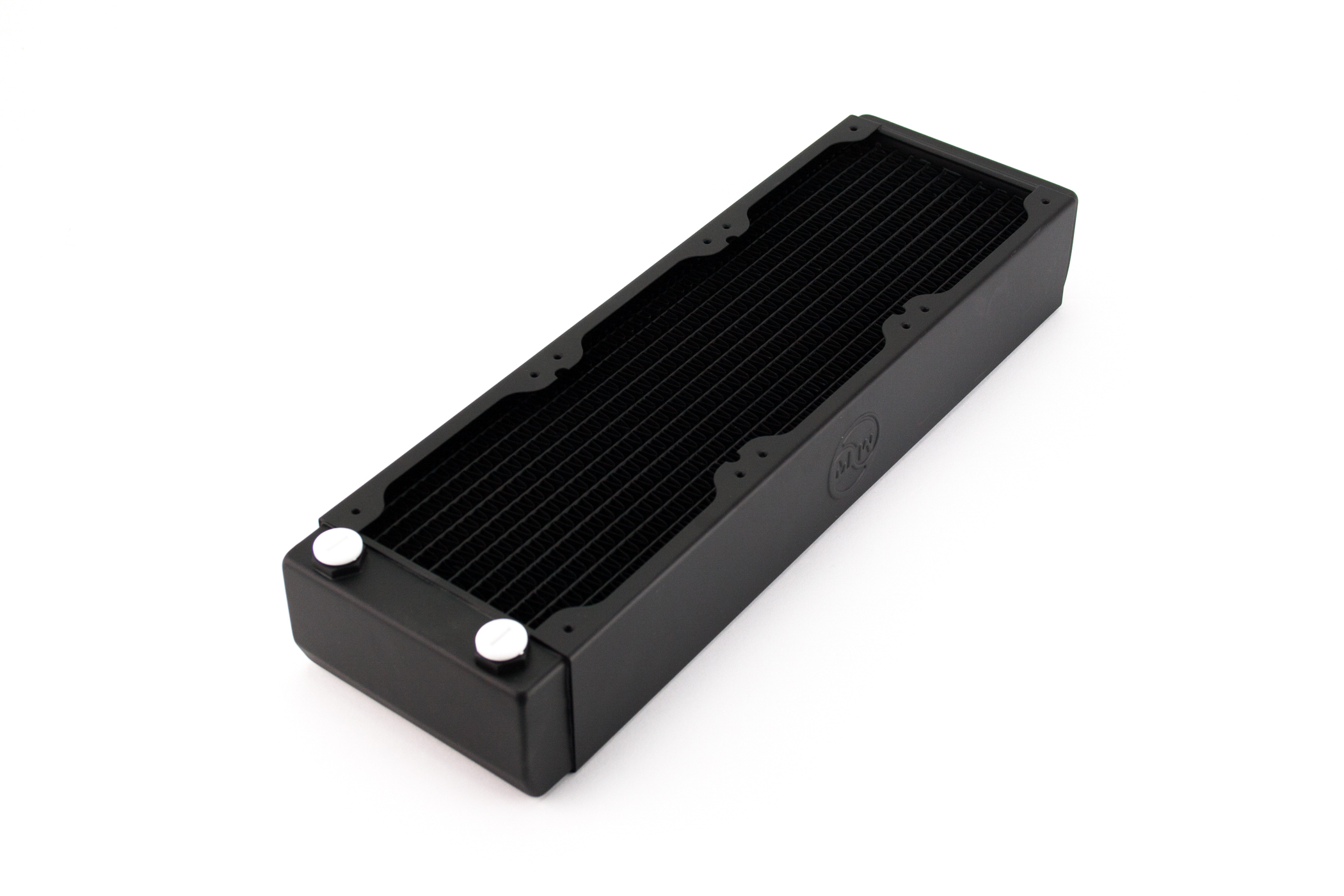
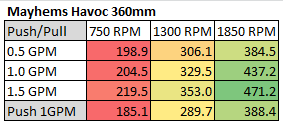
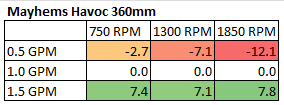
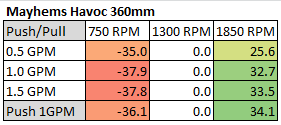
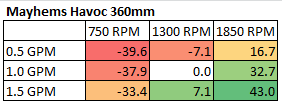
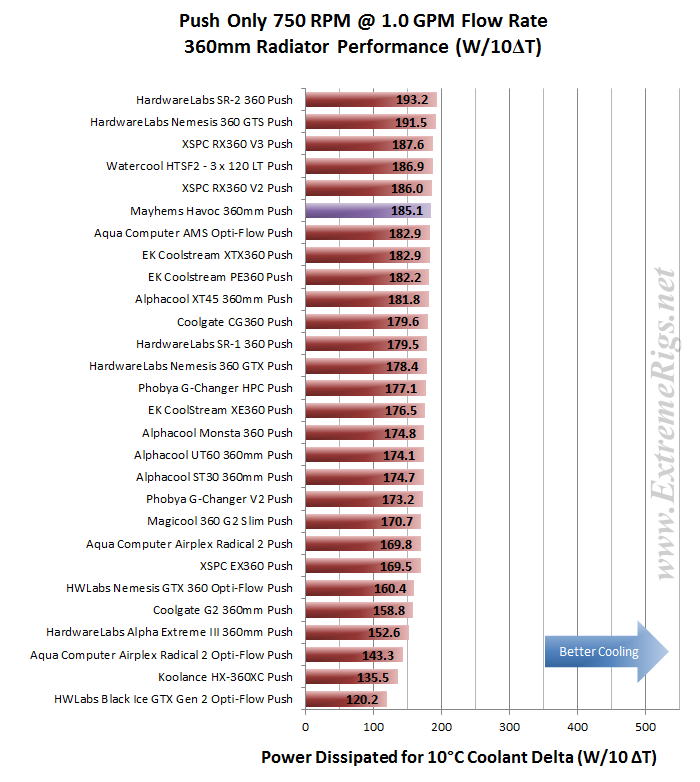
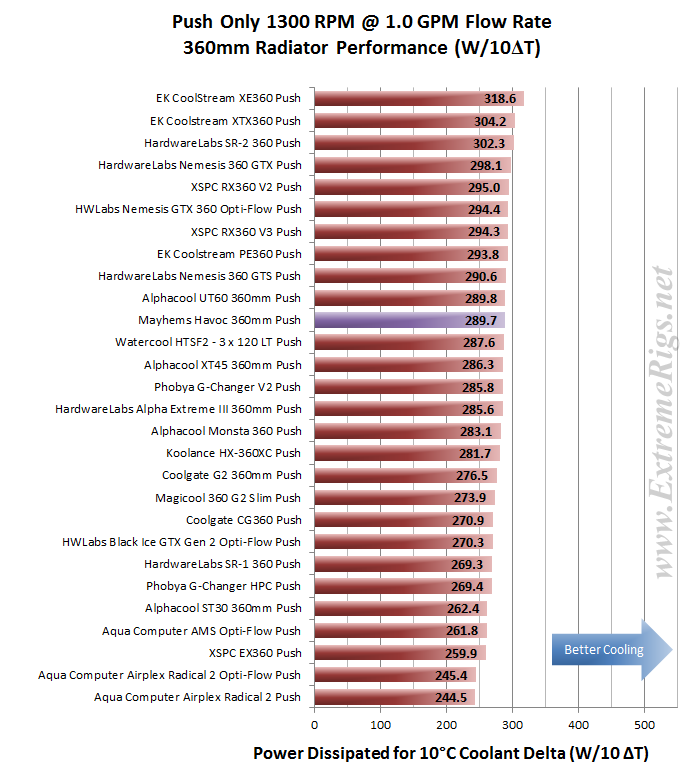
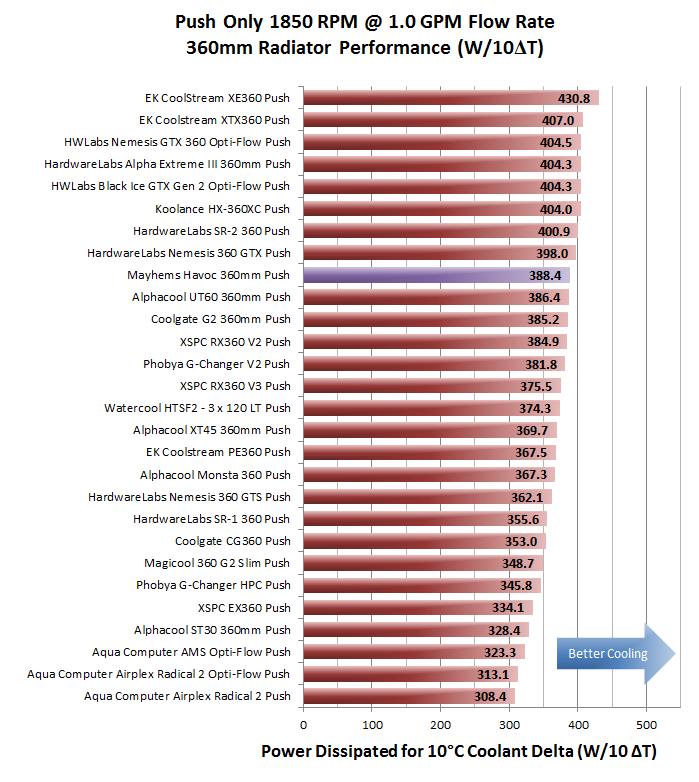
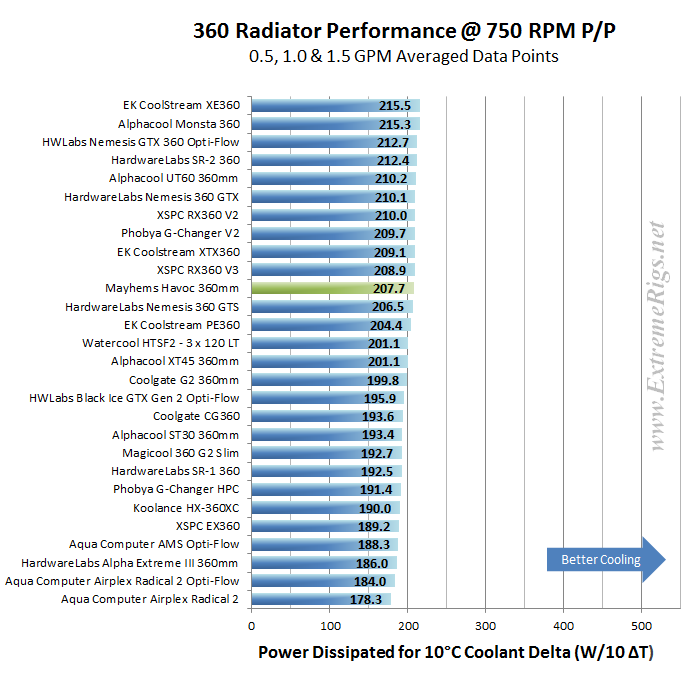
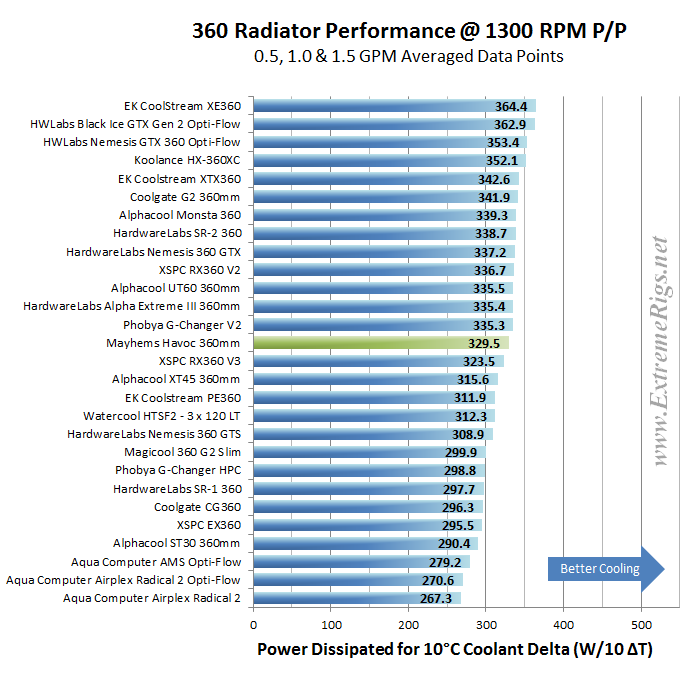
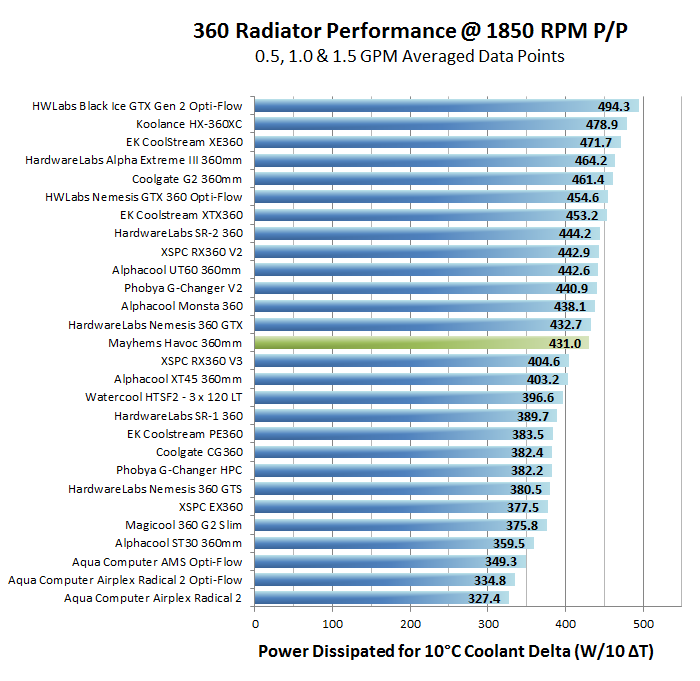
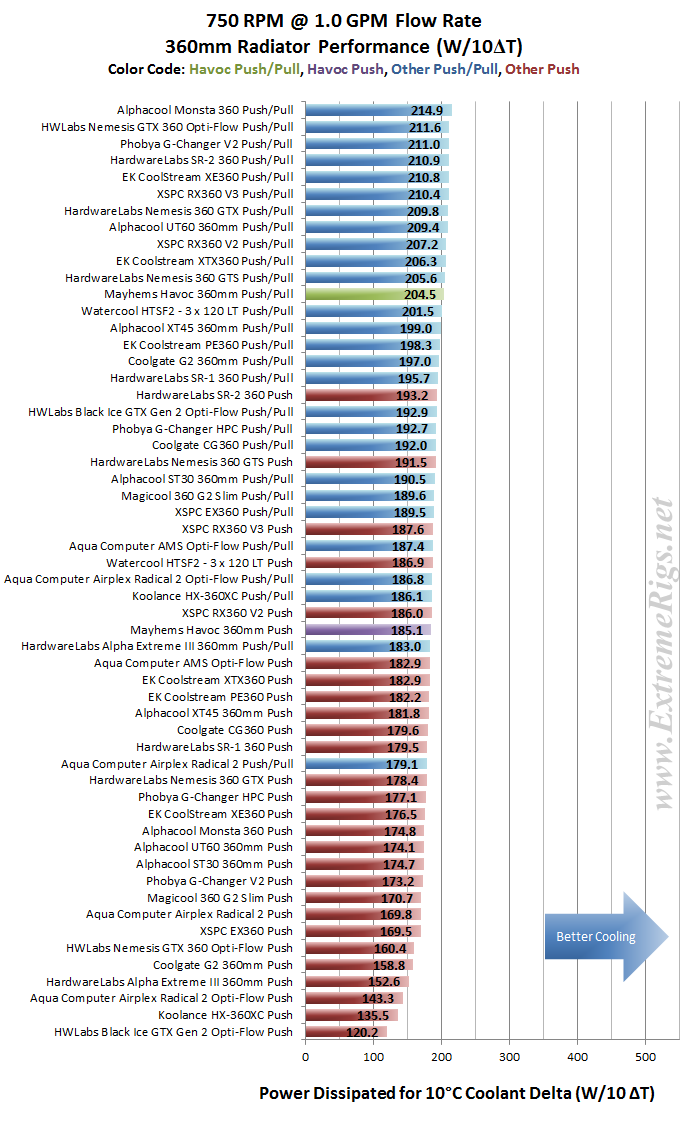
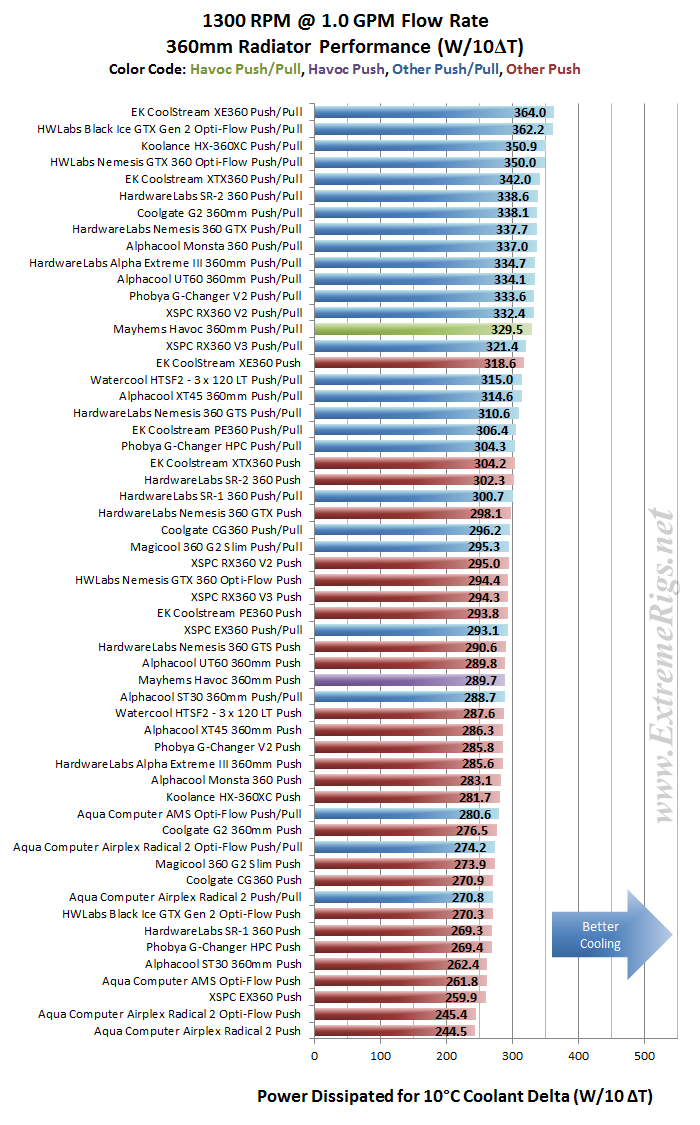
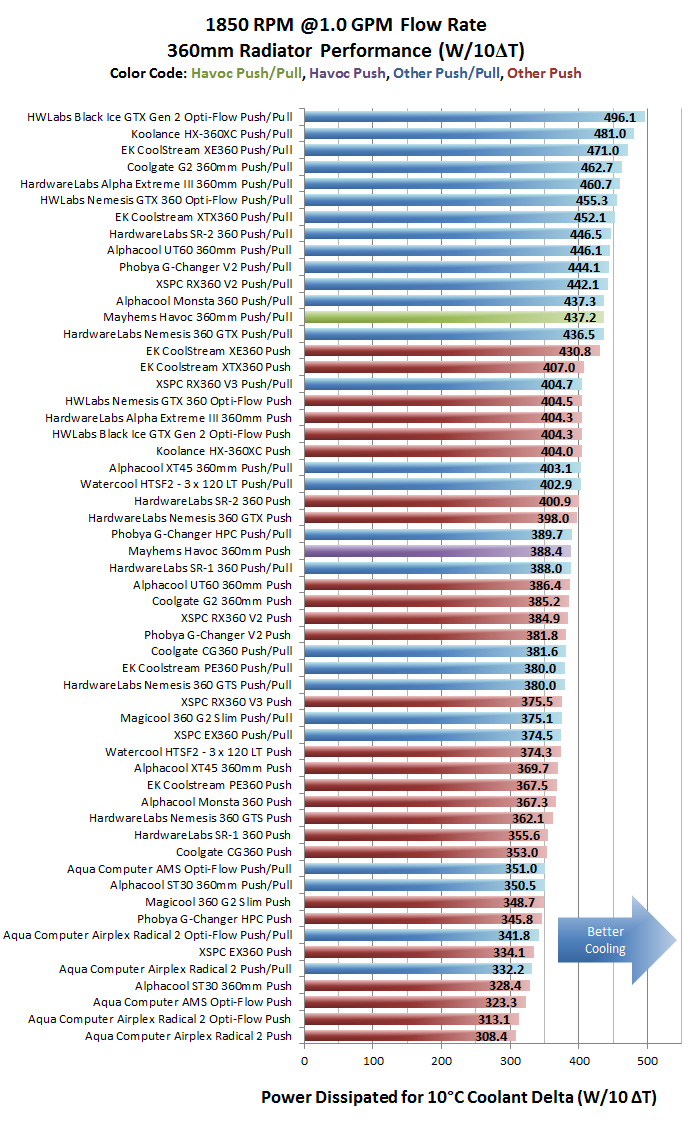
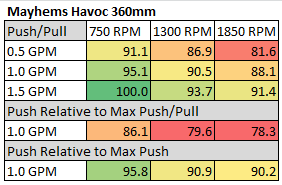
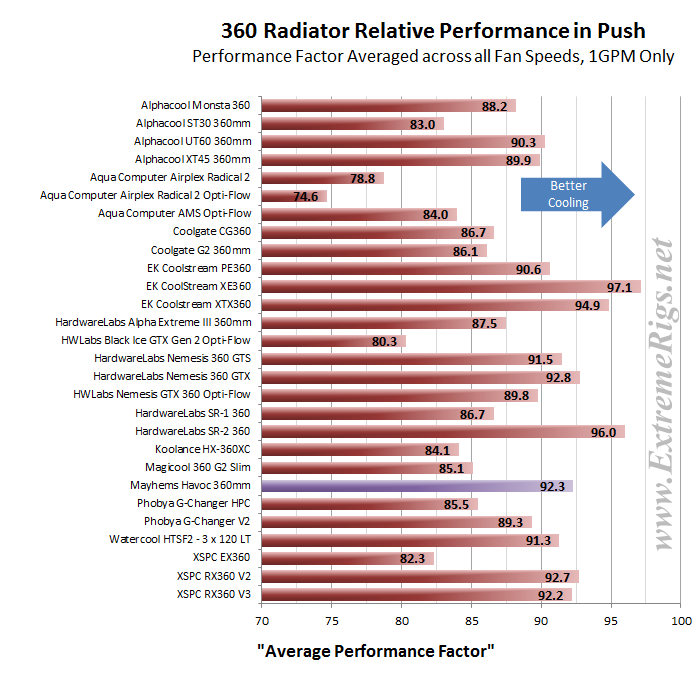
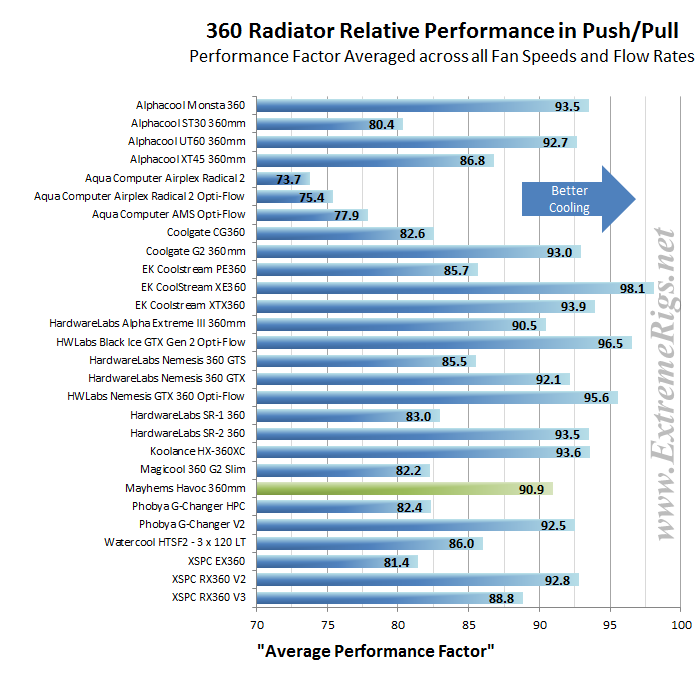




[…] Hardware Labs SR-1 360 Radiator Koolance HX-360XC 360 Radiator Magicool G2 Slim 360 Radiator Mayhem’s Havoc 360 Radiator Phobya G-Changer V2 Full Copper 360 Radiator Watercool HTSF2 3×120 LT 360 Radiator XSPC EX 360 […]
Comments are closed.